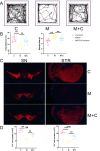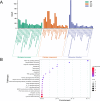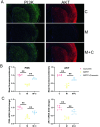Integrating Network Pharmacology, Transcriptomics to Reveal Neuroprotective of Curcumin Activate PI3K / AKT Pathway in Parkinson's Disease
- PMID: 39006191
- PMCID: PMC11246089
- DOI: 10.2147/DDDT.S462333
Integrating Network Pharmacology, Transcriptomics to Reveal Neuroprotective of Curcumin Activate PI3K / AKT Pathway in Parkinson's Disease
Abstract
Background: Parkinson's disease (PD) is the most prevalent movement disorder. Curcumin, a polyphenol with hydrophobic properties, has been proved against Parkinson. Our previous study suggested that curcumin's effectiveness in treating Parkinson's disease may be linked to the gut-brain axis, although the specific mechanism by which curcumin exerts neuroprotective effects in the brain remains unknown.
Methods: The therapeutic efficacy of curcumin was evaluated using behavioral tests, immunofluorescence of tyrosine hydroxylase (TH). Network pharmacology and transcriptomics predicted the mechanisms of curcumin in PD. Activation of the phosphatidylinositol 3-kinase PI3K/AKT pathway was confirmed by quantitative polymerase chain reaction (qPCR) and immunofluorescence.
Results: Curcumin restored the dyskinesia and dopaminergic neurons damage of MPTP-induced mice. Curcumin against Parkinson's disease by regulating inflammation, oxidative stress, and aging. The mechanisms of these were associated with activation of PI3K / AKT pathway.
Conclusion: In conclusion, the neuroprotective mechanisms of curcumin activate PI3K / AKT pathway in Parkinson's disease was revealed by our study.
Keywords: PI3K / AKT pathway; Parkinson’s disease; curcumin; network pharmacology; transcriptomics.
© 2024 Cai et al.
Conflict of interest statement
The authors declare no conflict of interest.
Figures







References
MeSH terms
Substances
LinkOut - more resources
Full Text Sources
Medical

